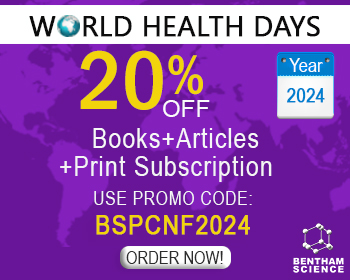Abstract
In 2016, there were 17.2 million cancer cases, which caused 8.9 million deaths worldwide. Of all cancers, ranked by absolute years of life lost, brain and central nervous system cancers were classified in the nine positions between 2006 and 2016. Glioblastoma is the most common malignant primary brain tumor and comprises 80% of malignant tumours. The therapeutic approach usually involves the combination of surgery and radiotherapy, which present a high risk for the patient and are not always effective in the most aggressive cases. Chemotherapy commonly includes a specific number of cycles given over a set period of time, in which patients receive one drug or a combination of different compounds. The difficulty of access for the neurosurgeon to remove the tumor, the limitation of the penetration of the antitumor agents caused by the blood-brain barrier and the serious adverse effects of these drugs significantly compromise the therapeutic success in these patients. To solve these problems and improve the effectiveness of existing treatments, as well as new molecules, the use of nanotechnology is arousing much interest in the last decades in this field. The use of polymeric and lipid-based nanosystems is one of the best alternatives for the central delivery of drugs due to their versatility, easy manufacturing, biocompatibility, biodegradability and drug targeting, among other virtues. Thus, in this review, we will explore the recent advances in the latest anticancer agent’s development associated with polymeric and lipid-based nanocarriers as a novel tools for the management of brain tumors.
Keywords: Polymeric nanoparticles, lipid nanoparticles, tumor targeting, brain cancer, antitumor agents, cancer nanomedicine.
[http://dx.doi.org/10.1016/S1474-4422(17)30299-5] [PMID: 28931491]
[http://dx.doi.org/10.1038/d41586-018-06704-7] [PMID: 30258156]
[http://dx.doi.org/10.1038/s41571-019-0177-5] [PMID: 30733593]
[http://dx.doi.org/10.1016/S1474-4422(18)30468-X] [PMID: 30797715]
[http://dx.doi.org/10.1093/neuonc/nou283] [PMID: 25313193]
[http://dx.doi.org/10.1016/S0140-6736(11)61346-9] [PMID: 22510398]
[http://dx.doi.org/10.1016/j.jconrel.2017.08.033] [PMID: 28844756]
[http://dx.doi.org/10.1016/j.soncn.2018.10.005] [PMID: 30392759]
[http://dx.doi.org/10.1634/theoncologist.2009-0317] [PMID: 20688807]
[http://dx.doi.org/10.1016/j.chemphys.2019.02.013]
[http://dx.doi.org/10.1016/j.jelechem.2016.03.020]
[http://dx.doi.org/10.1016/j.phrs.2019.104398] [PMID: 31415916]
[http://dx.doi.org/10.1016/j.bpc.2018.07.004] [PMID: 30064098]
[http://dx.doi.org/10.2174/1874467211205010102] [PMID: 22122467]
[http://dx.doi.org/10.1016/S1383-5718(03)00157-8] [PMID: 12948823]
[http://dx.doi.org/10.3390/pharmaceutics10040181] [PMID: 30304861]
[http://dx.doi.org/10.1016/j.jconrel.2016.02.026] [PMID: 26892752]
[http://dx.doi.org/10.1038/s41568-019-0205-x] [PMID: 31601988]
[http://dx.doi.org/10.1158/1078-0432.CCR-16-1327] [PMID: 27521448]
[http://dx.doi.org/10.1016/j.jiec.2019.06.050]
[http://dx.doi.org/10.1038/nrn2175] [PMID: 17643088]
[http://dx.doi.org/10.1111/jcmm.12496] [PMID: 25598425]
[http://dx.doi.org/10.1038/srep02604] [PMID: 24008368]
[http://dx.doi.org/10.1016/j.ijpharm.2017.07.049] [PMID: 28801108]
[http://dx.doi.org/10.1007/s11095-016-1947-8] [PMID: 27230936]
[http://dx.doi.org/10.1016/j.xphs.2018.12.002] [PMID: 30552956]
[http://dx.doi.org/10.1016/j.colsurfb.2009.09.001] [PMID: 19782542]
[http://dx.doi.org/10.1016/j.ijpharm.2008.04.042] [PMID: 18621492]
[http://dx.doi.org/10.2147/IJN.S105606] [PMID: 27601897]
[http://dx.doi.org/10.4161/hv.26796] [PMID: 24128651]
[http://dx.doi.org/10.3109/09687688.2014.937468] [PMID: 25046533]
[http://dx.doi.org/10.1054/bjoc.2000.1459] [PMID: 11044350]
[http://dx.doi.org/10.1016/S0378-5173(97)00135-X]
[http://dx.doi.org/10.15171/apb.2015.043] [PMID: 26504751]
[http://dx.doi.org/10.3109/1061186X.2012.716845] [PMID: 22931500]
[http://dx.doi.org/10.1016/B978-0-12-800148-6.00002-X] [PMID: 25409602]
[http://dx.doi.org/10.1016/j.jconrel.2019.04.031] [PMID: 31026546]
[http://dx.doi.org/10.1016/j.jconrel.2017.03.007] [PMID: 28279797]
[http://dx.doi.org/10.1016/j.wneu.2018.06.114] [PMID: 29960096]
[http://dx.doi.org/10.1021/acsami.6b10175] [PMID: 27808492]
[http://dx.doi.org/10.1016/j.biopha.2018.07.106] [PMID: 30119227]
[http://dx.doi.org/10.1016/j.biomaterials.2018.06.024] [PMID: 29936153]
[http://dx.doi.org/10.1016/j.biomaterials.2019.04.020] [PMID: 31026613]
[http://dx.doi.org/10.1016/j.jconrel.2017.07.009] [PMID: 28694032]
[http://dx.doi.org/10.1080/10717544.2018.1519002] [PMID: 30474437]
[http://dx.doi.org/10.1016/j.colsurfb.2018.09.047] [PMID: 30261346]
[http://dx.doi.org/10.1002/cmdc.201200052] [PMID: 22517723]
[http://dx.doi.org/10.1016/j.chemphyslip.2015.03.003] [PMID: 25819559]
[http://dx.doi.org/10.1016/j.ejpb.2018.09.012] [PMID: 30244167]
[http://dx.doi.org/10.3390/pharmaceutics11020065] [PMID: 30717376]
[http://dx.doi.org/10.1016/j.lfs.2016.01.025] [PMID: 26784850]
[http://dx.doi.org/10.1016/j.toxicon.2004.05.008] [PMID: 15302526]
[http://dx.doi.org/10.3390/ijms20020399] [PMID: 30669284]
[http://dx.doi.org/10.3390/molecules20022728] [PMID: 25665066]
[http://dx.doi.org/10.4161/auto.1.3.2017] [PMID: 16874025]
[http://dx.doi.org/10.1002/adhm.201900543] [PMID: 31348614]
[http://dx.doi.org/10.1016/j.addr.2016.04.025] [PMID: 27137110]
[http://dx.doi.org/10.3389/fphar.2018.00790] [PMID: 30065653]
[http://dx.doi.org/10.3389/fphar.2018.00228] [PMID: 29662451]
[http://dx.doi.org/10.1002/jps.23691] [PMID: 24037829]
[http://dx.doi.org/10.2217/17435889.2.2.143] [PMID: 17716116]
[PMID: 24600222]
[http://dx.doi.org/10.1002/jps.23773] [PMID: 24338748]
[http://dx.doi.org/10.2174/138161210791208992] [PMID: 20222866]
[http://dx.doi.org/10.1016/j.bbrc.2015.08.023] [PMID: 26260323]



























